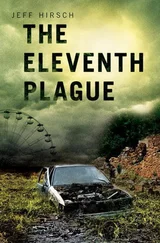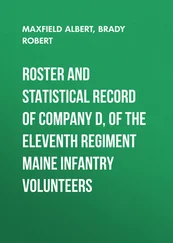Anthony Summers - The Eleventh Day
Здесь есть возможность читать онлайн «Anthony Summers - The Eleventh Day» весь текст электронной книги совершенно бесплатно (целиком полную версию без сокращений). В некоторых случаях можно слушать аудио, скачать через торрент в формате fb2 и присутствует краткое содержание. Жанр: Старинная литература, на английском языке. Описание произведения, (предисловие) а так же отзывы посетителей доступны на портале библиотеки ЛибКат.
- Название:The Eleventh Day
- Автор:
- Жанр:
- Год:неизвестен
- ISBN:нет данных
- Рейтинг книги:3 / 5. Голосов: 1
-
Избранное:Добавить в избранное
- Отзывы:
-
Ваша оценка:
- 60
- 1
- 2
- 3
- 4
- 5
The Eleventh Day: краткое содержание, описание и аннотация
Предлагаем к чтению аннотацию, описание, краткое содержание или предисловие (зависит от того, что написал сам автор книги «The Eleventh Day»). Если вы не нашли необходимую информацию о книге — напишите в комментариях, мы постараемся отыскать её.
The Eleventh Day — читать онлайн бесплатно полную книгу (весь текст) целиком
Ниже представлен текст книги, разбитый по страницам. Система сохранения места последней прочитанной страницы, позволяет с удобством читать онлайн бесплатно книгу «The Eleventh Day», без необходимости каждый раз заново искать на чём Вы остановились. Поставьте закладку, и сможете в любой момент перейти на страницу, на которой закончили чтение.
Интервал:
Закладка:
Flight 77 had been flying on undetected, for ground controllers worked on the assumption that it was still flying not east but west. Then at 9:32, controllers monitoring radar at Dulles Airport, outside Washington, spotted an unidentified airplane speeding toward the capital. Reagan National, the airport situated alongside the Potomac River in Washington itself, was notified. So were Secret Service agents, who were by now fretting both about the safety of the Vice President—still in his White House office—and of the President, still at that school in Florida.
ISOLATED FROM THE ONRUSH of events, but very aware of the catastrophe in New York, the President was launching into his thank-you remarks to the teachers and fifth-grade students—remarks rapidly reshaped to take account of the attacks and suggest that the nation’s leader was at the helm:
Ladies and gentlemen, this is a difficult moment for America. I unfortunately will be going back to Washington.… Today we have had a national tragedy. Two airplanes have crashed into the World Trade Center in an apparent terrorist attack on our country.… I have ordered the full resources of the federal government to go to help the victims and their families and to conduct a full-scale investigation to hunt down and find those folks who’ve committed this act. Terrorism against our nation will not stand. Now, if you’ll join me in a moment
of silence.… May God bless the victims and their families and America.
Bush was gone from the school moments later. A Secret Service agent emerged at a run to tell local police officers, “We’re under terrorist attack. We have to go now.” The presidential motorcade sped off, heading for the Sarasota airport. Before it got there, however, events would torpedo the plan to return to Washington.
FROM THE TOWER at Reagan Airport in Washington, a supervisor had been talking urgently with the Secret Service’s Operations Center at the White House. “We’ve got an aircraft coming at you,” he said, “and not talking with us.” It is less than four miles from the airport to the White House. Within three minutes, by 9:36, according to the Secret Service record, the agents who had been waiting in Cheney’s outer office—submachine guns in hand—acted. “They came in,” the Vice President remembered, “grabbed me and … you know, your feet touch the floor periodically. But they’re bigger than I am, and they hoisted me up and moved me very rapidly down the hallway, down some stairs, through some doors, and down some more stairs into an underground facility under the White House.” He was on his way to the Presidential Emergency Operations Center, a fortified bunker originally built for President Roosevelt in World War II, where he was to remain for many hours.
DULLES CONTROLLERS had reported that the suspect airplane was headed toward the restricted airspace around the White House, known as P-56. It was ten miles out, still pointed that way, when radar at Reagan National picked it up. Then it turned south. A National Guard cargo aircraft pilot, asked if he had it in sight, could see it clearly. It looked “like a 757 with a silver fuselage” descending, Colonel Steve O’Brien would recall.
Then, squinting through the haze, O’Brien saw the plane begin to turn back again toward the city. Suddenly, horrified controllers in the Reagan control tower no longer needed the reports of the National Guard pilot. There the airliner was, in plain sight and less than a mile away.
A fire engine captain and his crew on Interstate 395, en route to a training session, saw the plane in steep descent, banking right. A policeman on a motorcycle on Columbia Pike saw it, flying so low that its fuselage reflected the shapes of the buildings beneath. A Catholic priest, on his way to a graveside service at Arlington Cemetery, saw it—flying no more than twenty feet above the road, he said. Steve Anderson, an executive for USA Today , who saw it from his 19th floor office, couldn’t believe his eyes.
“I heard an airplane, a very loud airplane, come from behind me,” said Richard Benedetto, a reporter for the paper, “an American Airlines airplane. I could see it very clearly.”
“I was close enough—about a hundred feet or so—that I could see the American Airlines logo on the tail,” said Steve Riskus. “It was not completely level but … kind of like it was landing with no gear down … It knocked over a few light poles on its way.”
“I looked out my driver’s side window,” said insurance company employee Penny Elgas, “and realized I was looking at the nose of an airplane … I saw the end of the wing closest to me and the underside closest to me … I remember recognizing it as an American Airlines plane … The plane seemed to be floating as if it were a paper glider.”
AT THE PENTAGON, on the south bank of the Potomac, the news from New York had set some people thinking. “What do we have in place to protect from an airplane?” someone had asked Pentagon police chief John Jester. “Nothing,” he replied. There were measures in place to counter a terrorist attack on the ground, but there was no antiaircraft system. Jester raised the “Protection Condition” to “Alpha,” all he could do in the circumstances.
Controller Sean Boger, in the little tower beside the Pentagon heliport, wondered aloud why it was that no airplane had ever hit the Pentagon—even by accident. The vast complex was, after all, only a mile from Reagan National. Then, out of nowhere, Boger saw “the nose and the wing of an aircraft just like, coming right at us.”
The plane hit just as Jester’s deputy was passing on the “Alpha” alert order. Six hundred feet from the point of impact, Jester heard the noise, felt a shaking, but—so huge and so solidly built is the Pentagon—thought it was caused by “furniture on a pallet rolling over an expansion joint.” Others heard the sound as a muffled “thwoom.”
Flight 77, still with some 5,300 gallons of fuel in its tanks, had hurtled into the military nerve center of the United States at a speed later calculated to have been about 530 miles per hour. The plane struck the west side of the Pentagon just above ground level, going on in diagonally at an angle of about forty-two degrees.
To Penny Elgas, watching petrified in her car, the airliner seemed to “simply melt into the building. I saw a smoke ring surround the fuselage as it made contact with the wall.”
“I saw the plane,” another driver, Rebecca Gordon, said. “It was there … Then it was gone … it just vanished.”
“I expected to see the tail sticking out,” recalled Sheryl Alleger, a naval officer who saw the crash site afterward. “But—nothing. It was like the building swallowed the plane.”
As the airplane pierced the structure, a great mass of flame blossomed above the Pentagon’s roof. There were explosions. The carnage and destruction covered a ragged area of more than an acre of the vast complex.
A total of 189 people, 64 on the airliner and 125 military and civilian staff of the Defense Department, were killed—many instantaneously, more within minutes. Some of the Pentagon’s dead would be found still seated at their desks and conference tables. Forty-nine people suffered injuries sufficient to warrant admission to hospitals.
Christine Morrison, a survivor, described vividly what happened to her. “From the back of the room there was a heatwave-like haze … moving. Before I could register or complete that thought, this force hit the room, instantly turning the office into an inferno hell. Everything was falling, flying, and on fire, and there was no escaping it … I felt the heat and I heard the sizzling of me … Oxygen disappeared; my lungs felt like they were burning or collapsing. My mind was like sludge and thoughts took forever to form and longer to reach the brain, and even longer to make use of them … Everyone lost his or her sense of direction.”
Читать дальшеИнтервал:
Закладка:
Похожие книги на «The Eleventh Day»
Представляем Вашему вниманию похожие книги на «The Eleventh Day» списком для выбора. Мы отобрали схожую по названию и смыслу литературу в надежде предоставить читателям больше вариантов отыскать новые, интересные, ещё непрочитанные произведения.
Обсуждение, отзывы о книге «The Eleventh Day» и просто собственные мнения читателей. Оставьте ваши комментарии, напишите, что Вы думаете о произведении, его смысле или главных героях. Укажите что конкретно понравилось, а что нет, и почему Вы так считаете.











